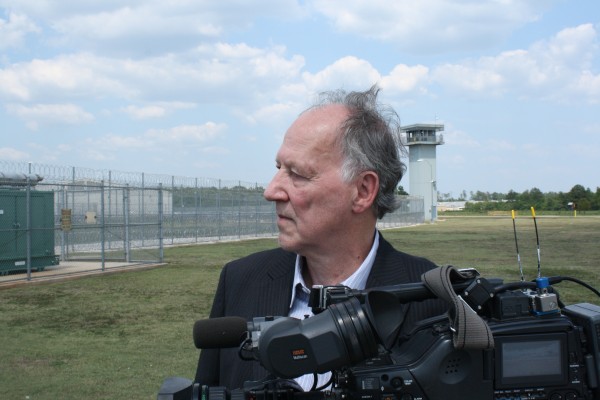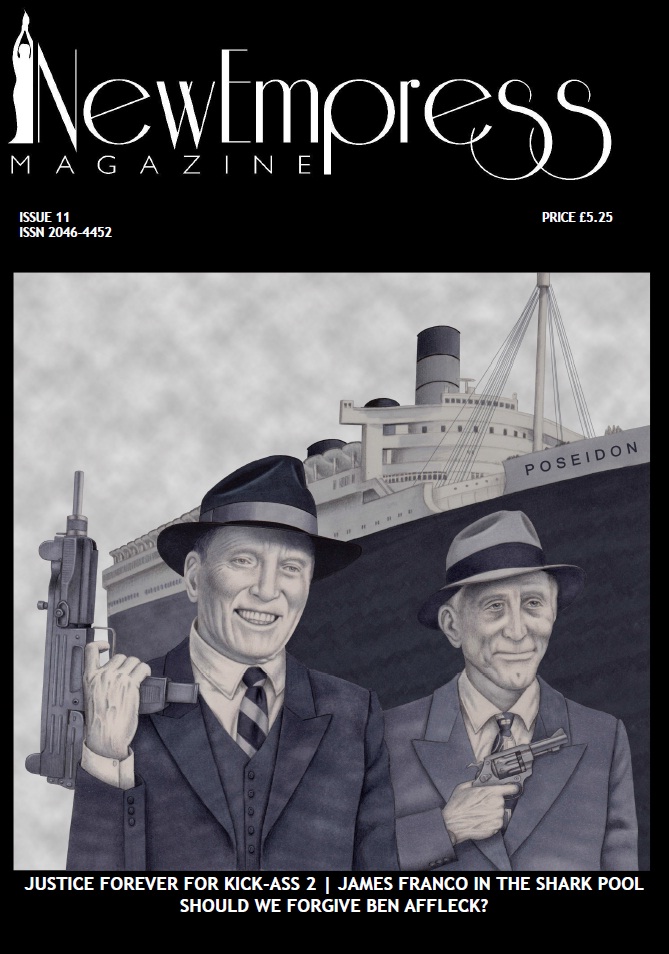
Idiosyncratic director Werner Herzog is the first to admit that the title of his new documentary, Into the Abyss, could apply to any number of his films. From Klaus Kinski boldly sailing downstream to his doom in Aguirre: Wrath of God and Fitzcarraldo, Timothy Treadwell facing the hostile and fatal clutches of nature in Grizzly Man to Herzog’s recent expeditions to the harsh, freezing temperatures of Antarctica in Encounters at the End of the World and his sombre ode to the lost Chauvet Caves in Cave of Forgotten Dreams, his characters and subjects are often seen staring into an endless void where time is eternal.
It’s clear then, why Herzog would be drawn to the inmates on death row as each of them are staring into their own abyss. Herzog finds fascination in the fact that they know the exact date and time their death will come, something which we cannot. He focuses on one case (The series Death Row , currently being aired on Channel 4, follows four more inmates), that of a triple homicide in Texas which occurred a decade ago, and interviews the two convicted men.
They are both nearly thirty now. One is serving a forty year sentence and the other is eight days from his execution. They have been found guilty of killing a woman and two teenage boys in order to steal a sports car but are both pleading their innocence. Herzog isn’t particularly interested in this aspect of the story, or even in creating a ‘for or against’ argument on capital punishment (which he is resolutely against). Instead, Herzog’s camera explores themes of senseless crime and the nature of death.
As with many of his documentaries before, Herzog amasses a curious selection of talking heads. It is their testimonies on mortality that engross the most. One woman, the daughter and sister of one of the victims, explains how nearly all of her family were killed through train accidents, suicides and illness in the space of six years. Another interviewee recounts how he was attacked and stabbed with a 15 inch screwdriver while drolly stating “I was lucky there”. And another man, responsible for overseeing 125 executions by lethal injection, describes his sudden realisation that he could not take part in one more death. He says it is his time now to “live the dash”; the space between birth date and date of death on his tombstone.
His story, as well as that of one of the inmate’s pregnant wives, seems to account for the film’s sub-title. For, as much as this is a film that deals with the harrowing details and inevitability of death, it also possesses an unlikely energy.
Herzog states that with each of his films he aims to achieve an ‘ecstatic truth’. Too many documentaries, he argues, present the facts but hold no greater meaning. And while Into the Abyss contains moments of brilliance that haunt and transfix – Herzog’s camera moves slowly along a deserted death row – it is also at times muddled, Herzog’s canvas and questions (“Why does God allow capital punishment?”) come across as too broad to allow for suitable debate, perhaps accounting for the parallel TV series. But he has always dreamt big and this is still a film that lingers long in the mind after the credits roll.

Adam has awarded Into the Abyss three torches of truth


















{ 1 comment… read it below or add one }
I take it from what Adam wrote that he did not think it worth paying the extra £2 to see, but not be able to participate in, the Q&A with Herzog that was being shown live from, I think, the Ritzy Picturehouse on Tuesday – as with Cave of Forgotten Dreams, which the Picturehouse group is distributing on DVD (and Blu-ray), it will no doubt be an extra for those who either access it, or revisit it, via that format.
What I think that a lot of commentary about Herzog tends not to emphasize is his playfulness, which his own seemingly serious appearance and demeanour might camouflage. (After all, who could make not only films with Kinski (despite the backstage aspect of that working relationship), but even that staggering one in which he took over from Mick Jagger and embodied the energizing fantasy that is Fitzcarraldo, without an enormous sense of fun?)
I will be interested to see what form that takes in this new film, after recalling how Herzog just lets the camera roll, and so allows us to catch Graham Dorrington literally capering in his lab, in The White Diamond, at the thought of flight in general, and, specifically, flying in the airship that he has devised. In Encounters at The End of The World, he again lulls the scientific community into dropping its guard, and to think that his somewhat ponderous style of delivery of his own narration is not undercut by being tongue in cheek is definitely to miss a dimension (even in 3D).
I will have more to say elsewhere, in a long-neglected piece about Cave of Forgotten Dreams, but it leaves me with no conception of how Herzog would treat the subject of Death Row, except that suggested by Adam of The Abyss. Yet, at the same time, I recall how sensitively, again in The White Diamond, Herzog gives Dorrington the space to talk, at the right time, about the horror of the accident in which a friend and colleague died in an earlier airship of his design:
That horror is always at the back of his mind when, with joy, Dorrington contemplates flight, and the chilling account of what happened has its natural place in the film – alongside the pure pleasure of Marc Anthony Yhap in his fine rooster. As recently departed novelist Russell Hoban saw it, the horror, the terror, is ever present, under the surface of things.